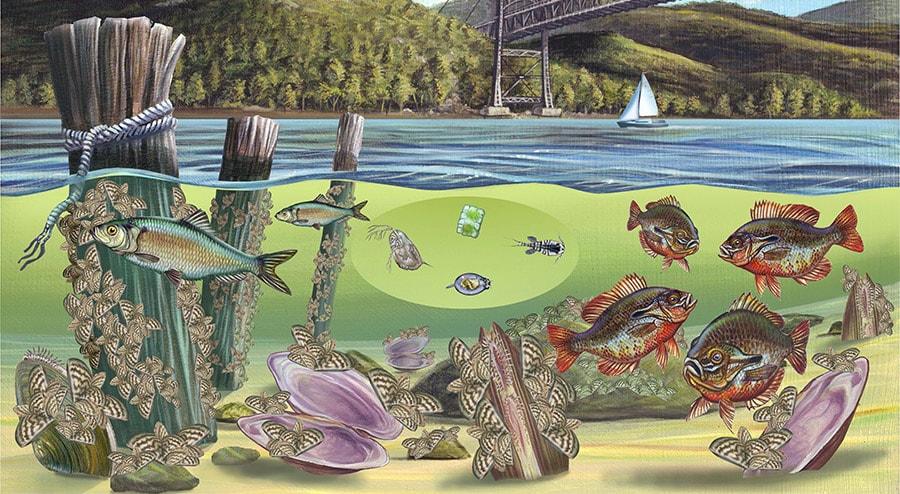
November 29, 2016
Digital Ecosystems for Government, Part 1: What are they?
The Oxford English Dictionary defines an ecosystem as “a biological community of interacting organisms and their physical environment.” We often identify an ecosystem as a sum of its parts. When we look at a coral reef, a forest or a pond, we see these ecosystems for what they are in their entirety. That is how we have known them; mainly because we did not create them.
But we rarely realize that these ecosystems are hundreds of thousands of years in the making, and constitute more than just their visible elements. They also include the invisible interactions; the flow of energy, and direct or indirect dependencies between elements. From the tiniest creature to the largest predator, from small ponds to rain patterns, these elements are connected to the geography and the geology of the place. This is an organically evolved ecosystem.

The difference between a natural ecosystem and a digital ecosystem is in its development. A natural ecosystem is not designed, it just happens and evolves. The elements of the ecosystem adjust to changes and growth, and the system accommodates its elements.
A digital ecosystem, on the other hand, is designed — planned and implemented. We cannot let a digital ecosystem take its course and evolve. That would result in chaos. We cannot trust digital ecosystems to “just happen,” because they never will.
Today’s successful brands and businesses have latched on to the concept and are reaping the rewards of creating a user centric digital ecosystem. That is why we see successful brands like Apple, Google, Microsoft, Amazon, and several others heavily investing in creating ecosystems for their users. They create a connected environment powered by their infrastructure, where individual users are the focus, feeling the world revolves around them.

Users did not mind the extra step of syncing their iPod to iTunes. They saw the value of being part of the larger ecosystem and happily converted to Apple products. This revolutionized the music industry as well, and made Apple a leading player in the music business.
Every device that Apple has produced since the introduction of the iPod is seamlessly connected with the Apple ecosystem, and enables the user to focus on what users do best: produce content. Along with offering physical devices, Apple gives the users a virtual space to host all their created content in form of the iCloud. A user’s content can be accessed from any device and shared across all their channels because the connections are already there. Adding a device to an existing family is as easy as restarting your computer.
The Apple ecosystem did not happen organically. It was a carefully planned strategy to create an ecosystem where users could use any Apple device to connect to their content — the thing that everyone cares about the most.

If my iPhone gets stolen or dies on me, I am not nearly as distraught as I used to be before the Apple ecosystem, when I would have to transport my contacts and any other information I had physically stored on my pre-smart phone. Operational ease translates directly to user satisfaction and trust. Just as humans have an evolutionary instinct to belong to a tribe, users are far more at ease when they are part of an ecosystem. They can rely on the fact that they are not at the mercy of a single device or the technology that drives that device.
But the benefits of an ecosystem don't stop with connected devices. It is the information and the content that flows beyond devices. When I log into my Apple account, I can see a list of my devices. If any of them malfunction, I can schedule an appointment and take my device for someone to look at. At no point am I required to repeat information they already have on file.
While the evidence of digital ecosystems is primarily visible in the private sector, there is no reason why governments should not be working towards them. We have citizens reaching out to us for a variety of reasons. At every interaction, we ask them to fill forms, register for events and conduct transactions. Based on the need and the department that handles the need, citizens have to register and reregister for services. If private companies can bridge these gaps and enable a favorable user experience, government agencies should work towards that as well. We should no longer build siloed applications and websites.
Applying the context of Oxford’s definition of ecosystems to the digital space, there are 3 major elements that enable a successful government ecosystem: community, interaction, and environment. In the next posts in this series, I will explore the why, who, and how of creating a government ecosystem where citizens can conduct business and transact with ease, without having to recreate and duplicate efforts.
A digital ecosystem binds the citizen experience regardless of the agency or the digital property they interact with. When we think about ecosystems, we need to think about not just the individual channels, but also how these channels can connect to each other. We need to take a holistic, proactive approach to building the government experience, rather than a symptomatic, reactive one.
The flow of information, the interactions, and pain points of citizens need to be at the core of each project; Technology should be just an enabler. It is past time for government to break away from their operational silos and start seeing the forest for the trees. Can we do it?
Related Posts
- Part 2: Digital Ecosystems: Why Do We Need Them?
- Part 3: Digital Ecosystems: Cultivating a Holistic Digital Strategy
